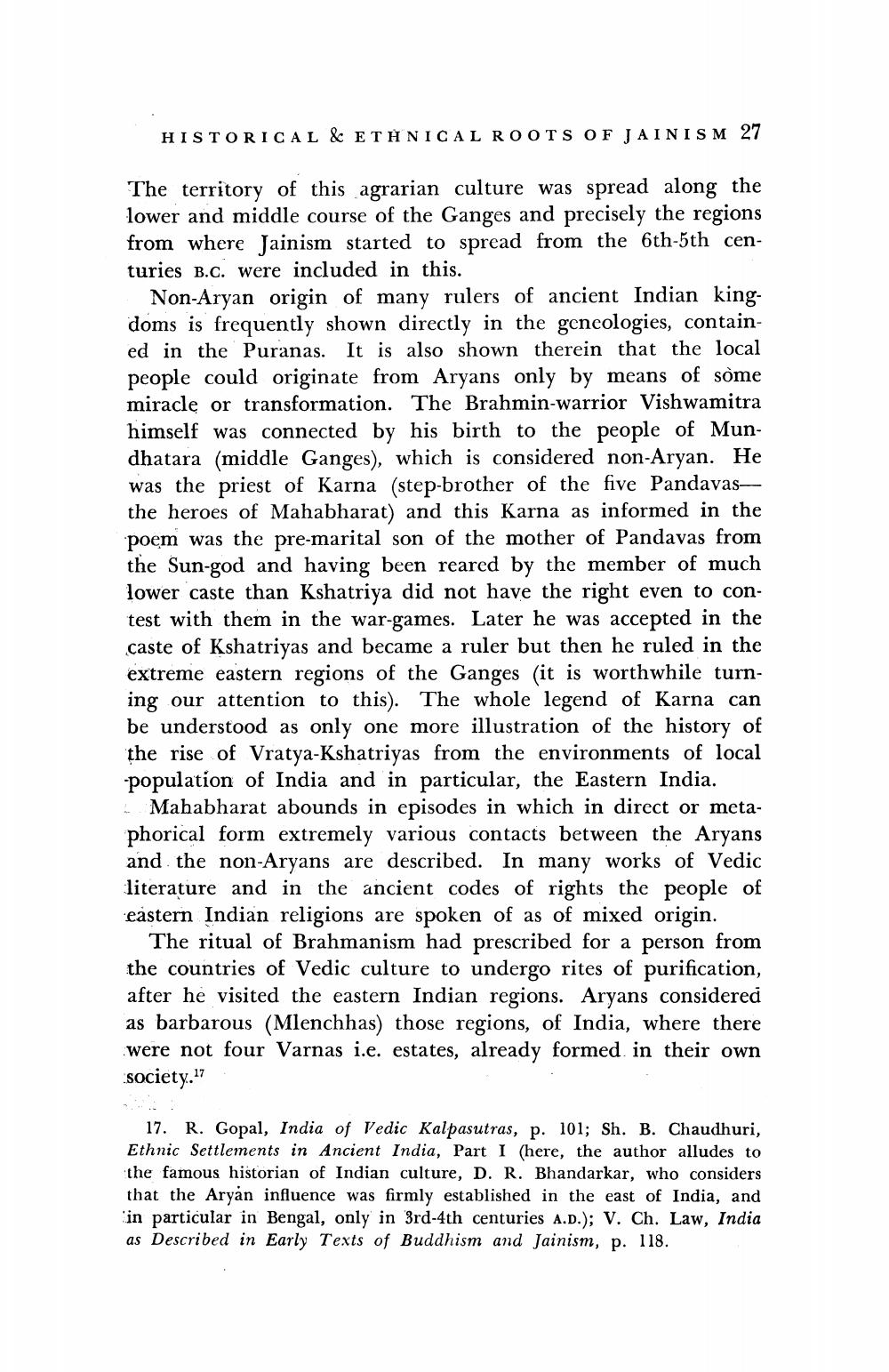________________
HISTORICAL & ETHNICAL ROOTS OF JAINISM 27
The territory of this agrarian culture was spread along the lower and middle course of the Ganges and precisely the regions from where Jainism started to spread from the 6th-5th centuries B.C. were included in this.
Non-Aryan origin of many rulers of ancient Indian kingdoms is frequently shown directly in the geneologies, contained in the Puranas. It is also shown therein that the local people could originate from Aryans only by means of some miracle or transformation. The Brahmin-warrior Vishwamitra himself was connected by his birth to the people of Mundhatara (middle Ganges), which is considered non-Aryan. He was the priest of Karna (step-brother of the five Pandavasthe heroes of Mahabharat) and this Karna as informed in the poem was the pre-marital son of the mother of Pandavas from the Sun-god and having been reared by the member of much lower caste than Kshatriya did not have the right even to contest with them in the war-games. Later he was accepted in the caste of Kshatriyas and became a ruler but then he ruled in the extreme eastern regions of the Ganges (it is worthwhile turning our attention to this). The whole legend of Karna can be understood as only one more illustration of the history of the rise of Vratya-Kshatriyas from the environments of local -population of India and in particular, the Eastern India.
Mahabharat abounds in episodes in which in direct or metaphorical form extremely various contacts between the Aryans and the non-Aryans are described. In many works of Vedic literature and in the ancient codes of rights the people of eastern Indian religions are spoken of as of mixed origin.
The ritual of Brahmanism had prescribed for a person from the countries of Vedic culture to undergo rites of purification, after he visited the eastern Indian regions. Aryans considered as barbarous (Mlenchhas) those regions, of India, where there were not four Varnas i.e. estates, already formed in their own society.17
17. R. Gopal, India of Vedic Kalpasutras, p. 101; Sh. B. Chaudhuri, Ethnic Settlements in Ancient India, Part I (here, the author alludes to the famous historian of Indian culture, D. R. Bhandarkar, who considers that the Aryan influence was firmly established in the east of India, and in particular in Bengal, only in 3rd-4th centuries A.D.); V. Ch. Law, India as Described in Early Texts of Buddhism and Jainism, p. 118.




